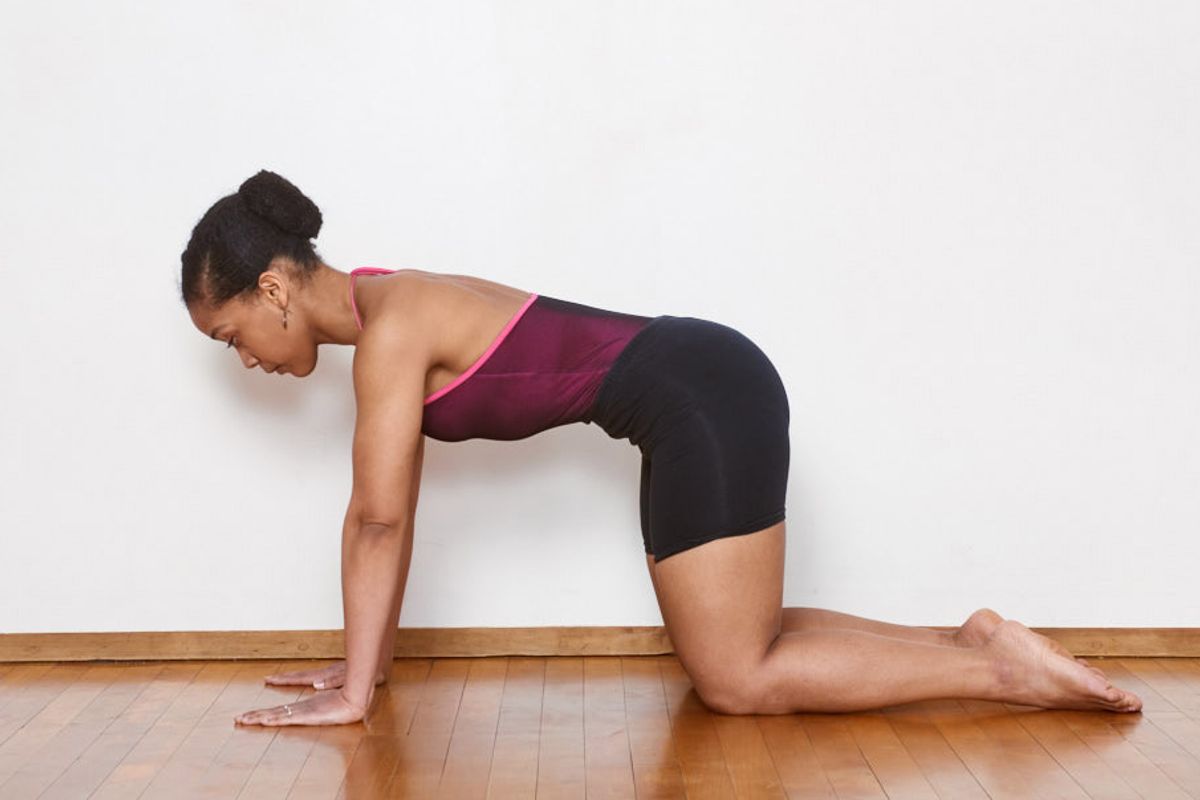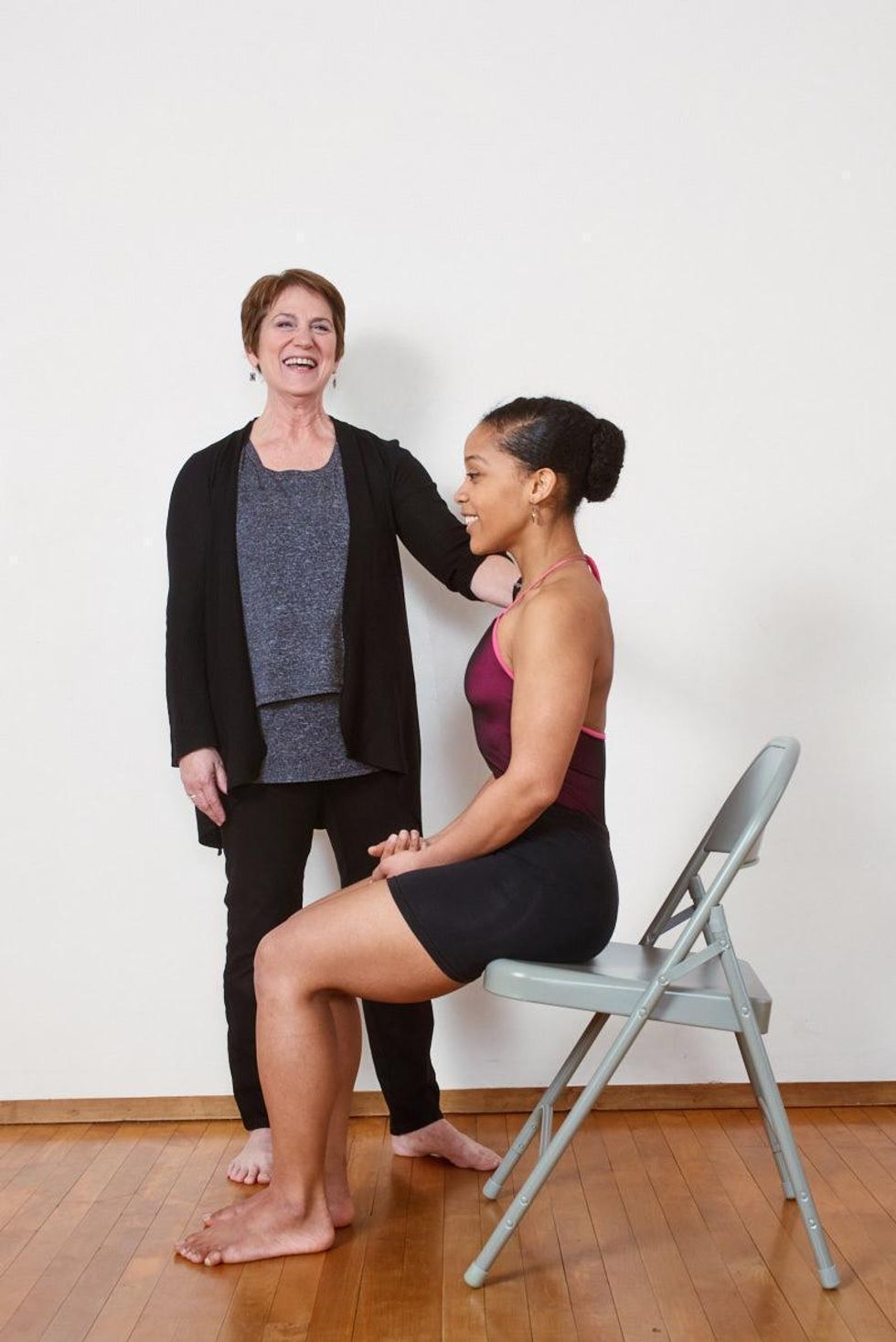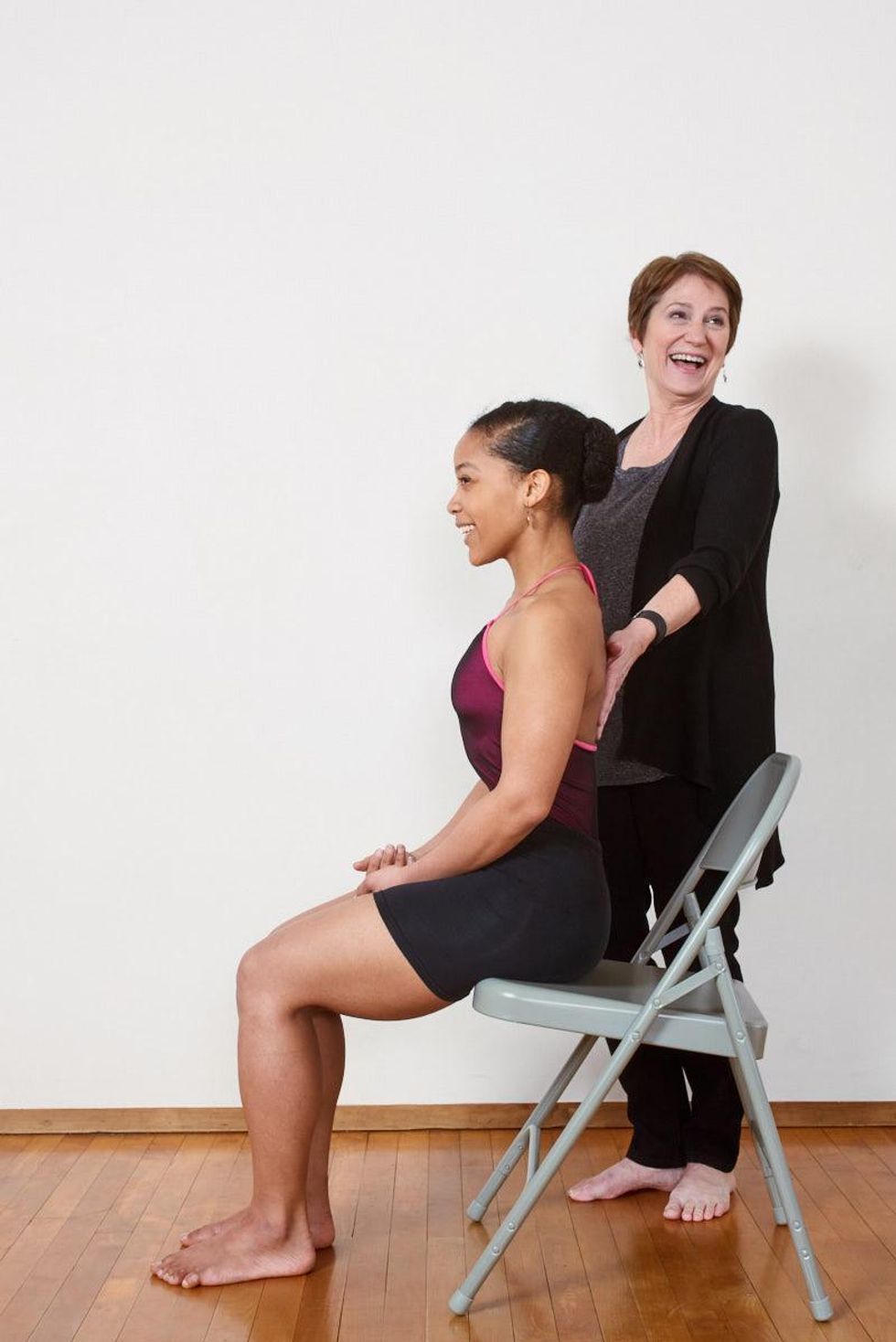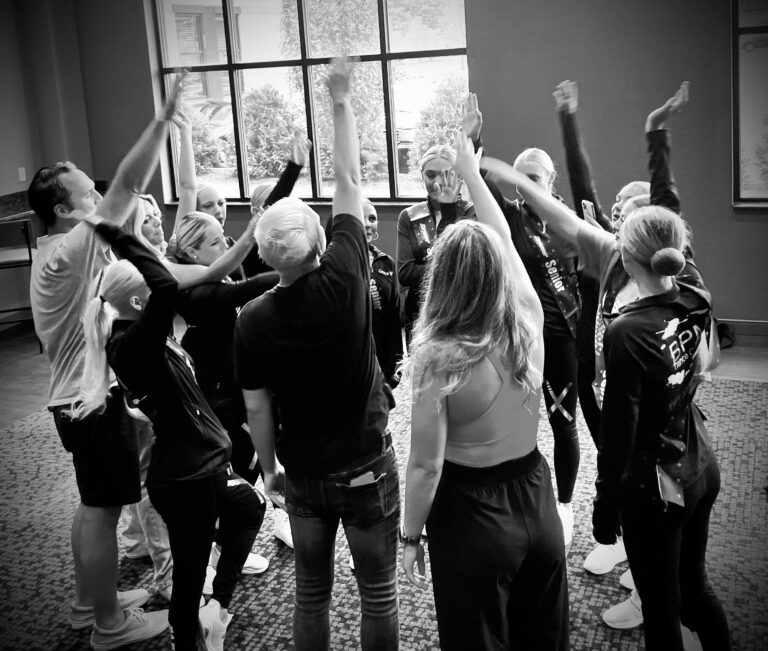
“If you don’t have strong abdominal muscles, you sag into your lower back, your pelvis usually tips and you’re hanging out and slumped into your hip joints,” says Deborah Vogel, movement analyst, neuromuscular expert and co-founder of the Center for Dance Medicine in New York City. “It just has this whole chain reaction.”
The effects of poor core strength can be dire for dancers: from weak and tight hip flexors, which negatively impact extensions, to lower-back discomfort and misaligned shoulders and necks. “Having well-toned abdominals for your posture is the primary reason why you should do stabilizing exercises,” says Vogel. “It will allow you to bring your pelvis into correct alignment and good posture.”
 Deborah Vogel is a neuromuscular expert. Here, she works with Sydney Magruder. Photo by Jim Lafferty
Deborah Vogel is a neuromuscular expert. Here, she works with Sydney Magruder. Photo by Jim Lafferty
Using the quadruped position, i.e., being on all fours, is beneficial because of the feedback you get. “People can’t always feel their pelvis tipping when they do leg-lowering exercises. They might just push their back into the ground and feel that that’s right,” says Vogel. “But when you’re in the quadruped, you can feel whether or not you’re moving. You can monitor your own efforts better.”
Here, she shares her three-part series.
A few sets of core strengtheners a day can keep bad alignment away.
Vogel recommends that dancers incorporate this series into their daily routine. “You do not need to be warm. You can do it anytime,” she says. However, “doing it before class will give you that awareness, so that when you stand up, you can maintain that sense of lift in the front of the pelvis and the drop in the back.”
Part 1
Part 3
 “The pelvis is like the hub of a wheel, and it will influence everything moving outward from that center. If the pelvis is not aligned, then the spine can’t be fully aligned, and the weight won’t go correctly through the legs.” —Deborah Vogel. Photo by Jim Lafferty
“The pelvis is like the hub of a wheel, and it will influence everything moving outward from that center. If the pelvis is not aligned, then the spine can’t be fully aligned, and the weight won’t go correctly through the legs.” —Deborah Vogel. Photo by Jim Lafferty
Sit on a physioball or a regular chair. Make sure your pelvis is upright and that you’re sitting up tall. Your feet should be flat on the floor and you should be positioned on the front of the chair.
Roll slowly forward and backward, feeling the roundness of the sit bone (ischial tuberosity). Note how your lower back and abs respond to the different positions.
Slowly roll until you feel the weight just to the front edge of the sit bones, and then think of drawing the pubis up toward your ribs while elongating your spine.
New at dance-teacher.com, Ask Deb answers your questions.




